I promised a list but that was just to lure you in. Bwahaha!
I won’t give you a boring old list because your portfolio should be way more interesting than that.
When I interviewed publishers and agents for the Good Ship Illustration Picture Book Course and the Business Course (which launches this evening BTW) they all agreed that what they want to see in your portfolio is your personality. Isn’t that great news?
Be yourself and follow your passions!
Oh maybe I will give you a list, but it has only two things on it:
Children and/or animal characters
Interaction and warmth between characters
It’s hard to make a picture book without children/ animals and some interaction between them. Oh, go on, I’ll have a go:
‘There once was a lonely table who never made a friend. The end.’
Admit it, it brought a tear to your eye. Ha!
Leave out the stuff you don’t like
It sounds obvious, but if you put work in your portfolio that you don’t feel proud of, someone will commission you to make more of it. Guaranteed.
And if you are mid way through changing your style, add as much of the new work as possible, otherwise you will be trapped in the old way of working forever. Arg!
Leave out that commission with a glamorous client that you want to show off, but you hate the final artwork. Perhaps you could include a list of clients on your website and highlight that client there, in a list rather than images.
Here’s my portfolio if you fancy a nosy:
This is the portfolio my agent uses at the book fairs and meetings with publishers.
The images are all cropped for Substack, but you can click on them to see the full portfolio page.
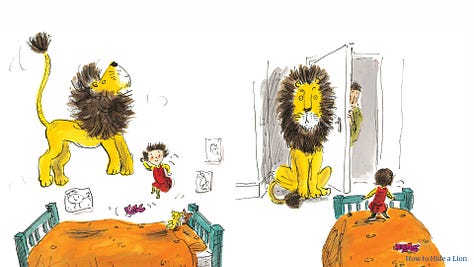
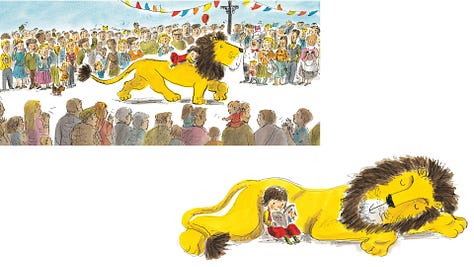
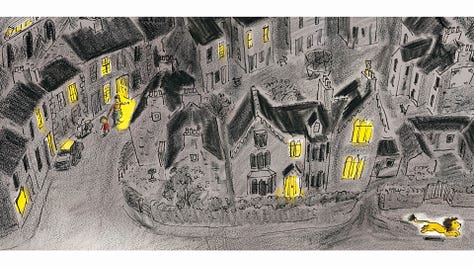
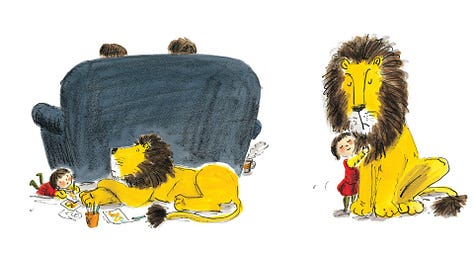
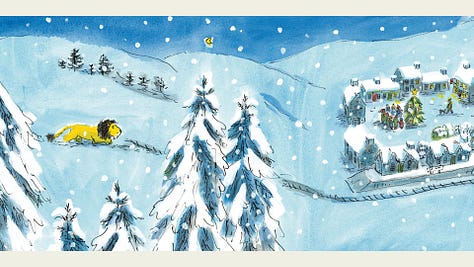
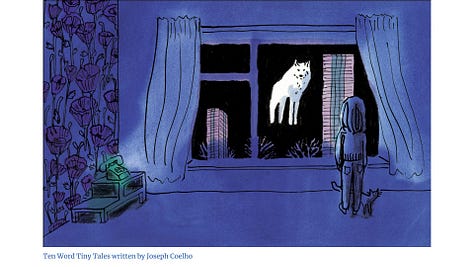
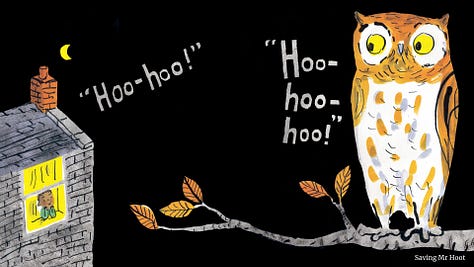
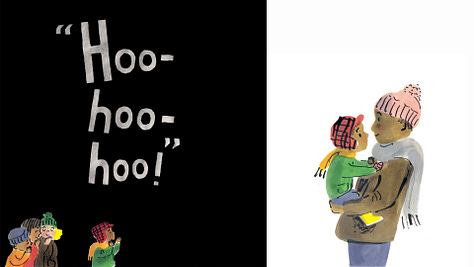
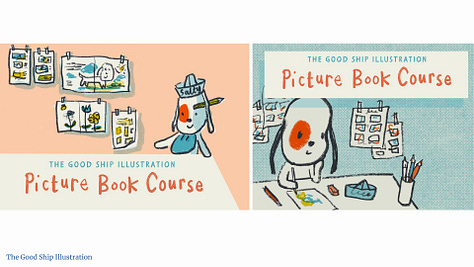
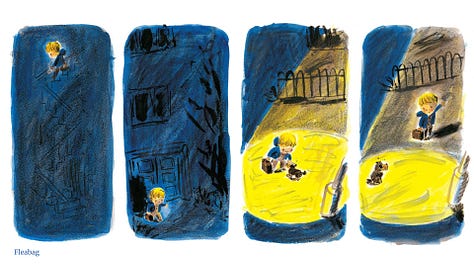

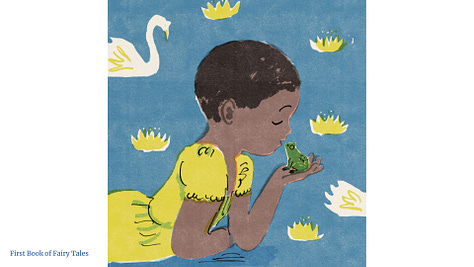
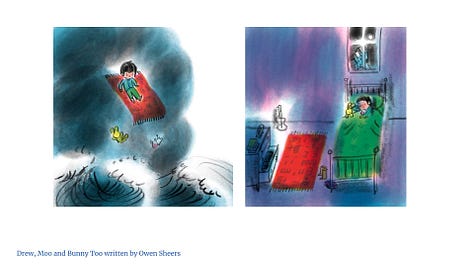
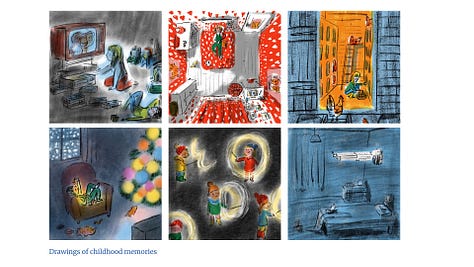
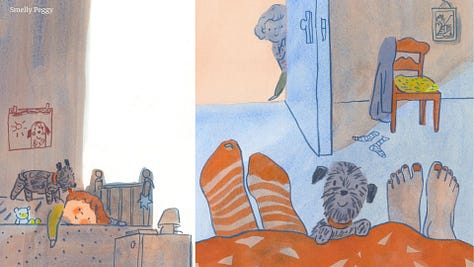
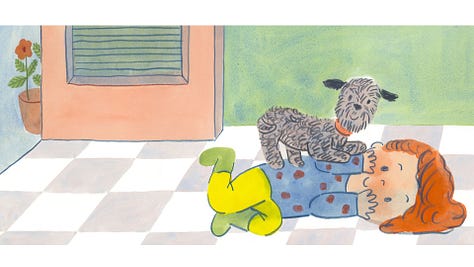

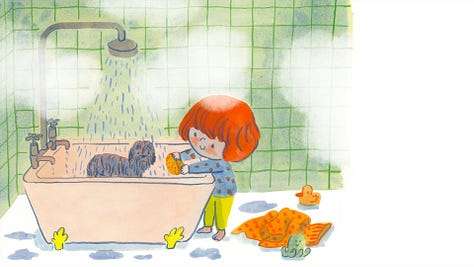
What I chose to include in my portfolio:
A few of the best images from the books I am most proud of.
Some self motivated work (the childhood memory drawings) because they show where my interests lie and the direction I might like to go.
Some drawings I did for The Good ship Illustration because that work is made for showing on a screen, rather than in a book, and has a different feel.
Something a little older and creepier than my usual work (the floating wolf drawing) because I would love to be commissioned to do more work like this.
I show a mix of double page spreads, half spreads and vignettes. I chose work set in the dark and the daytime to add contrast.
I show a mix of perspectives: from straight on, below and above, and I show different emotions: happy, sad, scary etc.
This is all the stuff I consider when making a picture book too. Think of your portfolio like a picture book, make each page turn interesting and surprising.
What I chose to leave out:
I left out books that went wrong for whatever reason: maybe my idea was knocked out of shape because the publisher was going through a rough patch and changed editors five times mid book, and each editor gave their own opinion until I had no idea what the book was any more. Yes, that happened once, it was a nightmare.
Maybe I didn’t get along with the creative team, or their method of working didn’t suit me. Yes that has happened too. You can’t make books for over twenty years without those experiences.
I left out books I made in an old style.
I left out a huge amount of work I love because I want the portfolio to be concise (and I don’t want to overwhelm everyone with my brilliance 🤩😜)
I hope this helps you make a wonderful, true to you portfolio and brings you lots of juicy illustration work.
If you’d like to know more about illustration portfolios, you could jump aboard our Good ship Illustration Business Course, it launches tonight after
and I go live on Instagram for a business chat at 7pm (uk time).Bring your businessy questions, we’d love to see you there!
love Helenx
P.S. There’s a new Good Ship podcast out today.



A list with only 2 things on it is MY KINDA LIST 🤣❤️
Dear Helen, this is so helpful! I love the different sets of illustrations and now find it much easier to think of what to put together. Thanks a lot!